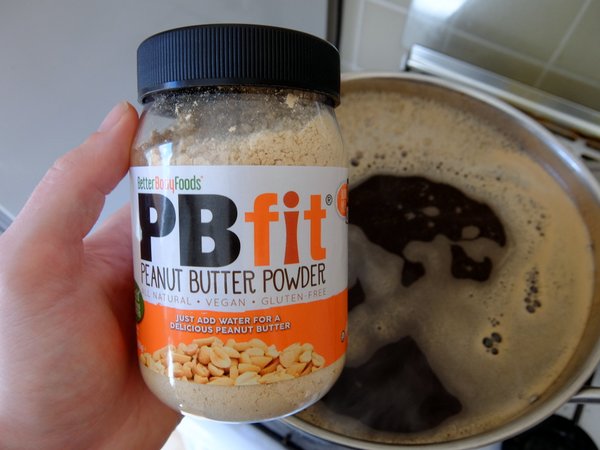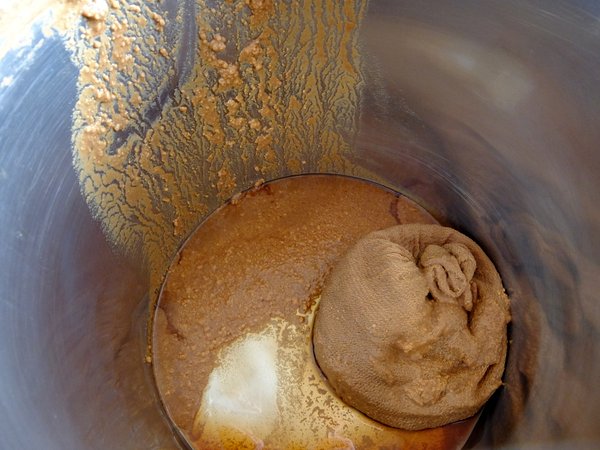Brewing A Peanut Butter Porter – Mixing Beer & Peanuts
Occasionally it becomes irresistible to try out something completely different to the ordinary home brew beer. As homebrewers we can pick and choose exactly what goes into a beer with no repercussions on whether anyone else will like it. I like Peanut Butter and I like dark beers and think the two will marry in perfect harmony, so, I have made a peanut butter porter to fulfil this desire.
Table of Contents
Using Unusual Ingredients
Ordinarily, I am not a massive fan of adding all sorts of ingredients to a beer just for the sake of it. I have talked about adding fruits before and spices and these additions work great in any beer. I do make an exception though when I think the addition of an ingredient will lift a beer and complement it. In this case, I think the peanut butter really will work well alongside the roasted, toffee and chocolate notes of a porter. That is not to say though I haven’t done a little bit of research on the best way to get the peanut butter into the beer.
Peanut Butter & Beer A Tricky Partnership
The problem with peanut butter as a beer ingredient is the fact that most peanut butters are around 50% fat, not only do peanuts contain a fair amount of fat content but peanut butters are made with oil. Oil and water (or beer in our case) don’t really mix all that well.
This desire to get peanut butter into a beer without the whole batch turning into a mess of beer, oil and peanuts has led home brewers to fairly laborious lengths of de-oiling peanut butter.
Deoiling peanut butter is a process that can take weeks or even months. You get yourself some organic peanut butter which seems to separate itself fairly easily, wait for oil to pool to the surface and tip it away, repeat this process a dozen times over several weeks until you get a dry and dry peanut butter. Still, however, it will have oil in it.
The only option in my view is to find some powdered peanut butter.
Powdered peanut butter contain just 13 grams of fat per 100 grams which is a much better starting point to regular peanut butter. Essentially powdered peanut butter is just roasted peanuts with the oil squeezed out of them. Using this powder we can add peanuts to the beer at any point we choose without introducing a lot of oil, the whole thing is much simpler and less messy. I found powdered peanut butter in ASDA so it must be gaining some popularity here in the UK.
When To Get The Peanut Butter Into The Beer?
Now the crucial decision is when to add it to the beer to get the best results. I have chosen the last minute of the boil, this was in the hope that it will retain as much of the nuttiness as possible and avoid any contamination by adding it into boiling wort. I did notice however the peanut powder settles out into a goop at the bottom of the brew pot fairly easily, I tried to get as much as I could into suspension and therefore into the fermenter to maximise the flavour of this addition.
I added pretty much the whole jar at the end of the boil!. From what I’ve read using peanut butter provides a subtle flavour that fades with age. I will update the site with tasting notes when ready to see if the whole jar was a mistake.
The Porter Base For The Peanut Butter
The beer I have added this peanut butter to is a fairly strong Porter at 6.2%. I never imagined this was going to be a session beer or one I would want to drink pints of back to back, so, I decided to boost the ABV to really fill out the palate and give the nuttiness something to match it in terms of flavour.
The beer is fairly straightforward with a Maris Otter base, Munich, Chocolate and Wheat malts. I did think about adding oats but decided there was enough oils and lipids coming from the peanut butter so decided to leave them out, I can imagine this beer not having great head retention as it is. Hops are a single addition of Fuggles at the beginning of the boil.
Please note that this is a recipe for 9 litres, to scale the recipe check out this information
Peanut Butter Porter - Robust Porter
================================================================================
Batch Size: 9.103 L
Boil Size: 10.190 L
Boil Time: 60.000 min
Efficiency: 70%
OG: 1.061
FG: 1.014
ABV: 6.2%
Bitterness: 30.2 IBUs (Tinseth)
Color: 62 SRM (Morey)
Fermentables
================================================================================
Name Type Amount Mashed Late Yield Color
Pale Malt, Maris Otter Grain 1.950 kg Yes No 82% 6 L
Chocolate Malt Grain 230.000 g Yes No 73% 886 L
Caramel/Crystal Malt - 60L Grain 230.000 g Yes No 74% 118 L
Munich Malt Grain 180.000 g Yes No 80% 18 L
Total grain: 2.590 kg
Hops
================================================================================
Name Alpha Amount Use Time Form IBU
Fuggles 4.5% 25.000 g Boil 60.000 min Leaf 30.2
Misc
================================================================================
Name Type Use Amount Time
Powdered Peanut Butter Flavor Boil 400.000 g 1.000 min
Yeast
================================================================================
Name Type Form Amount Stage
SafAle English Ale Ale Dry 11 g Primary
Mash
================================================================================
Name Type Amount Temp Target Time
Mash In Infusion 6.500 L 72.000 C 65.556 C 75.000 min
Final Batch Sparge Infusion 6.500 L 75.970 C 75.556 C 15.000 min






How did the flavour turn out?
Hey Dan, the flavour was good a nice background of peanut butter without being overwhelming.
Curious how much you used? And what led you to add during the boil vs trying in the primary or secondary? (Notwithstanding the need to sanitize if you went that path)
I just bottled a peanut butter porter myself today and am curious as to others approach. I used Valencia peanuts in the secondary for two days. Basically I boiled them then let cooled in a sanitized jar and dropped in. My first taste when bottling left only a very subtle taste of the peanuts. A bit disappointing as I’ve read others had success with this approach. I’m hoping the flavor is more pronounced when it’s carbonated and chilled, but I realize that is likely wishing thinking. Fortunately the underlying beer is good so not a total loss. I also used cacao nibs in the secondary and that flavor came through nicely.
I used a whole jar in 9 litres so it is not the cheapest beer to scale up. The flavour was definitely there for the first few months after this is was nicely balanced but a definite peanut butter background in the beer.
As with any beer, you don’t really know what it is going to be like till it’s completely ready but at the very least it sounds like a really good beer. Cheers!
Thanks for this, I made this recipe recently. Really nice and made a very good beer. I also just made the same basic recipe but made it into a Gingerbread porter for Christmas which has also come out really well.
Good to hear. Sounds delicious!
Nice article!
I recently bottled a batch but I made it an Imperial Porter and did add some oats and some lactose. Haven’t yet tried it. I did find that adding the PB powder directly kinda lumped together. I would use a strainer next time!
Cheers
Thanks for the write-up and recipe, Neil.
How was the head retention (if any) using PB powder?
Cheers
Very poor. The head appeared for a moment then dissipates after pouring.
Hi, I was wondering if any of you have tried adding the peanut powder in a secondary fermentation. If so, did you cook it in the oven first (to roast it any kill any potential gems)? I’m about to make a peanut butter porter and any feedback would be greatly appreciated! Cheers!
If haven’t tried adding it to secondary and haven’t tried heating peanut butter powder before. It would be an interesting experiment to try.
Heey what did you do and how did it turn out?